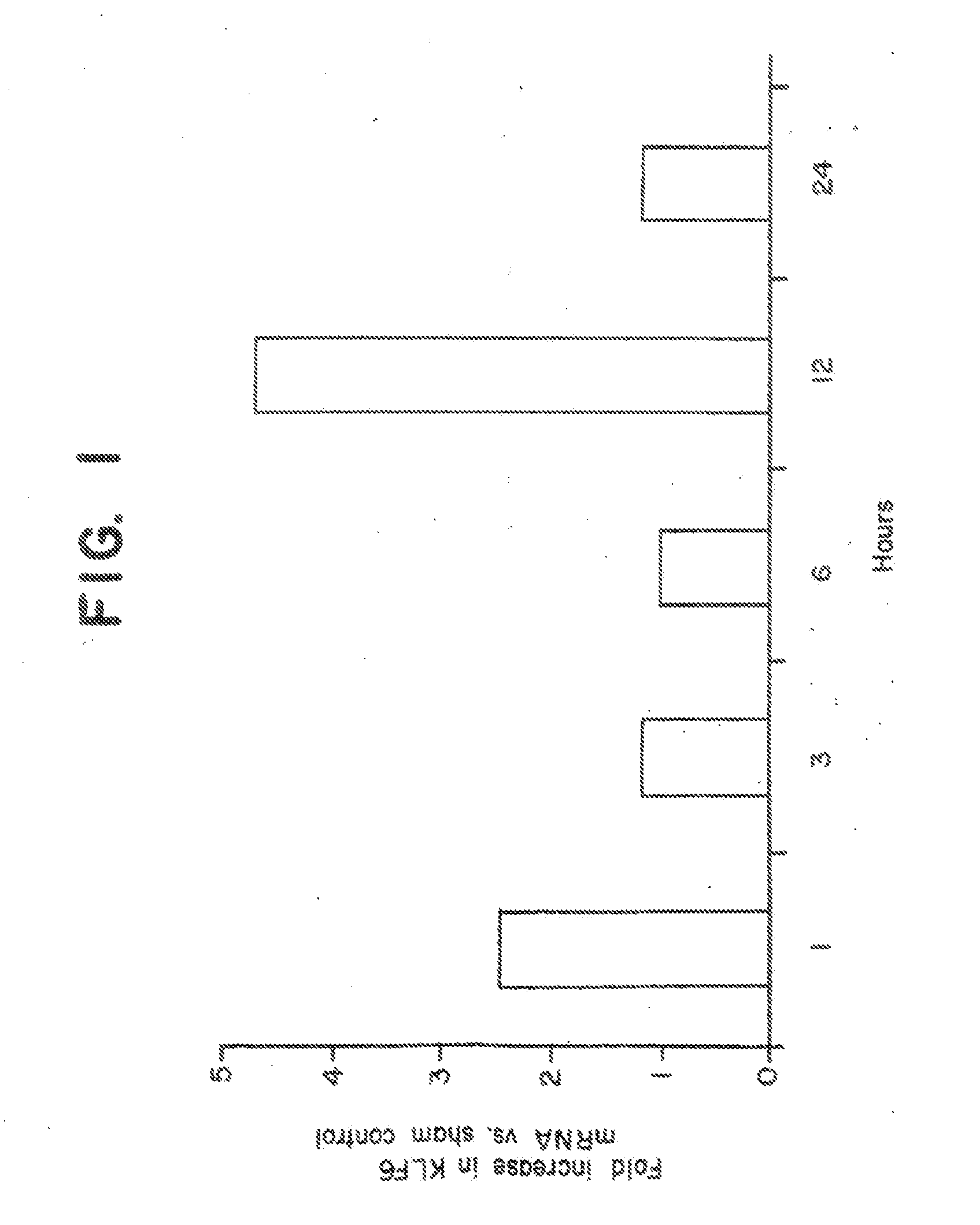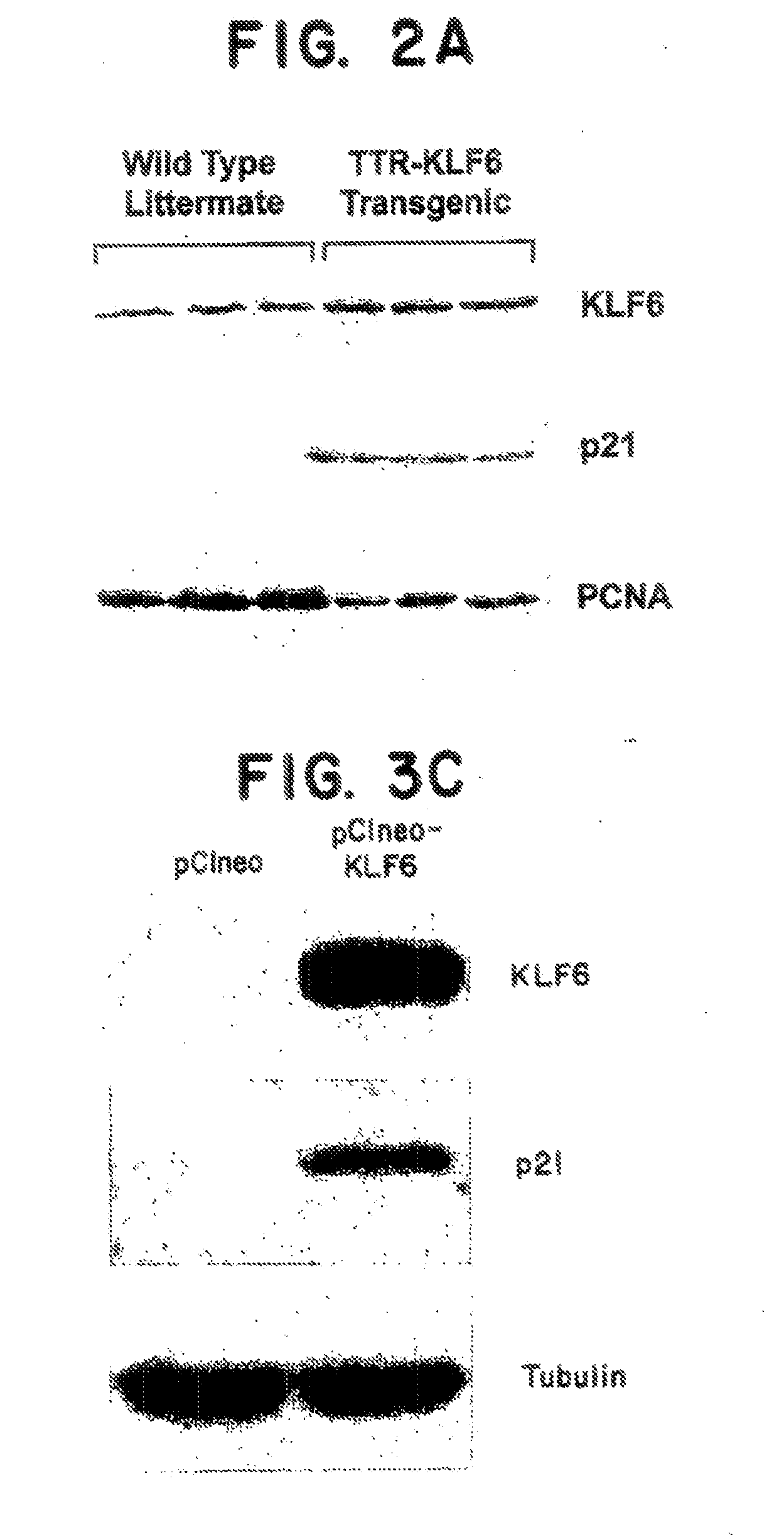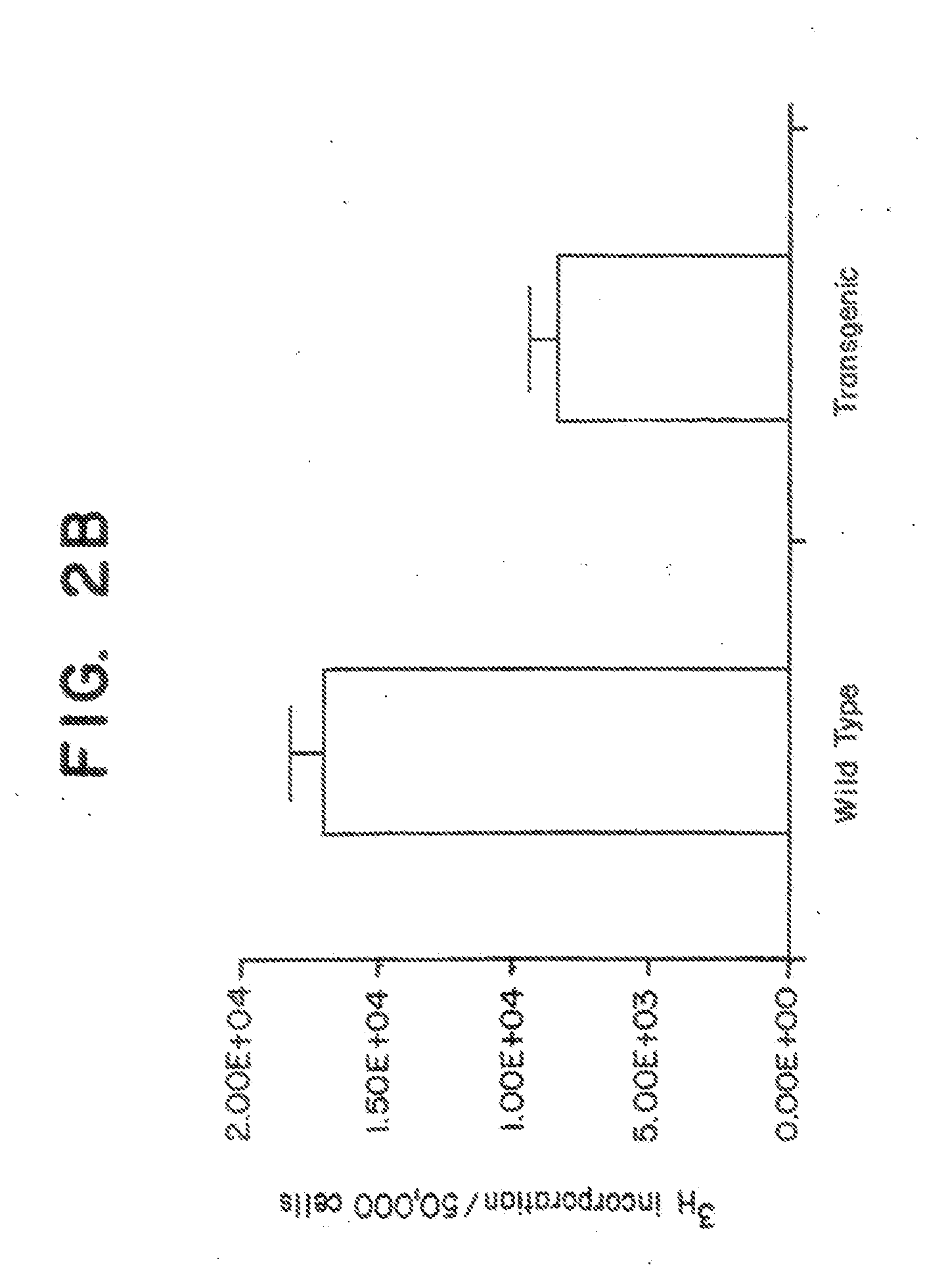Kruppel-like factor 6 (KLF6), a tumor suppressor protein, and diagnostics, therapeutics, and screening based on this protein
a tumor suppressor and protein technology, applied in the field of identification of the tumor suppressor activity of a protein, can solve the problems of uncontrollable growth, ineffective current cancer treatment such as surgery, chemotherapy and radiation, and a difficult task to diagnose cancer in individuals
- Summary
- Abstract
- Description
- Claims
- Application Information
AI Technical Summary
Benefits of technology
Problems solved by technology
Method used
Image
Examples
example 1
Antiproliferative Effect of KLF6 in the Hepatocytes of Transgenic Mice
[0195]This example describes the effects of KLF6 on overall and hepatocyte specific cell growth and proliferation in transgenic mice. Overexpression of KLF6 in hepatocytes results in an antiproliferative effect in mice, displaying reductions in size, liver weight and hepatocyte proliferation. The effects on cell proliferation suggests that KLF6 is an important factor in cell growth and cell cycling.
Materials and Methods
[0196]Transgenic mice. An expression vector containing a FLAG epitope-tagged full length rat KLF6 cDNA was subcloned into the hepatocyte-specific transthyretin (TTR) promoter construct as described (Wu, et al., Genes Dev., 1996, 10:245-260). Three lines of transgenic mice TTR1-KLF6, TTR4-KLF6, and TTR9-KLF6 were established using standard methods in which an expression cDNA plasmid (5 ng per μl) encoding the Flag-epitope-tagged KLF6 cDNA downstream of the TTR promoter was microinjected into a fertil...
example 2
KLF6 Induced Expression of p21, a Cell-Cycle Regulator, Independent of p53
[0203]The impairment in cell growth and proliferation exhibited by the KLF6 transgenic mice strongly suggested that KLF6 plays an important role in the cell cycle. Additionally, the similarity of the KLF6 transgenic mice to the p21 hepatocyte-specific transgenic mice (Wu, et al., Genes Dev. 1996, 10:245-260) suggested that KLF6 may regulate cell growth and proliferation through the p21 signaling pathway.
Materials and Methods
[0204]Plasmids and cell lines. pTet-KLF6 was constructed by inserting rat KLF6 cDNA into AccI / EcoRV sites of pTet-splice (GIBCO BRL). A tetracycline-regulated cell line expressing KLF6 was established as described by co-transfecting pTet-KLF6 and pBpuro into the cell line containing pTet-tTAk (Shockett, et al., Proc. Natl. Acad. Sci. USA 1995, 92:6522-6526), followed by selection with histidine-deficient DMEM (Irvine Scientific) and 2 mg / ml puromycin (Sigma) in the presence of 2 mg / ml tetra...
example 3
KLF6 Inactivation in Human Glioblastoma and Neuroblastoma Cell Lines, and Primary Tumors
Materials and Methods
[0214]Levels of mRNA. Levels of mRNA were detected by Northern Blot.
[0215]DNA Sequencing. The sequencing of cDNA and genomic DNA were done by ABI automated sequencer at the University of Utah DNA sequencing facility on a recharge basis.
[0216]Western blots. Levels of protein were detected by Western blot.
[0217]Cell lines. The Memorial Sloan Kettering neuroblastoma cell lines SK-N-ML (a kind gift of Dr. Andrew Chan, Ruttenberg Cancer Center, Mount Sinai School of Medicine), and the human glioblastoma cell line CRL2020 (ATCC Tissue type collection) were analyzed. Control cell lines included Hep 3B, HSC-T6 cells (Bayer AG), and NIH 3T3 fibroblasts.
Results
[0218]KLF6 mutation in a glioblastoma cell line. The human glioblastoma cell line CRL2020 has a known chromosomal 10p deletion. KLF6 has been localized to 10p. By DNA sequencing of KLF6 cDNA and genomic DNA from the cell line, it...
PUM
| Property | Measurement | Unit |
|---|---|---|
| volume | aaaaa | aaaaa |
| volume | aaaaa | aaaaa |
| pH | aaaaa | aaaaa |
Abstract
Description
Claims
Application Information
 Login to View More
Login to View More - R&D
- Intellectual Property
- Life Sciences
- Materials
- Tech Scout
- Unparalleled Data Quality
- Higher Quality Content
- 60% Fewer Hallucinations
Browse by: Latest US Patents, China's latest patents, Technical Efficacy Thesaurus, Application Domain, Technology Topic, Popular Technical Reports.
© 2025 PatSnap. All rights reserved.Legal|Privacy policy|Modern Slavery Act Transparency Statement|Sitemap|About US| Contact US: help@patsnap.com



